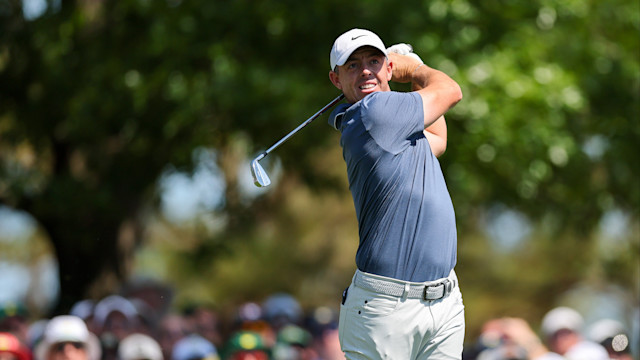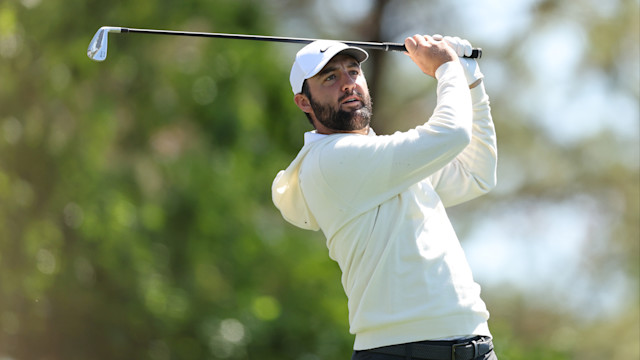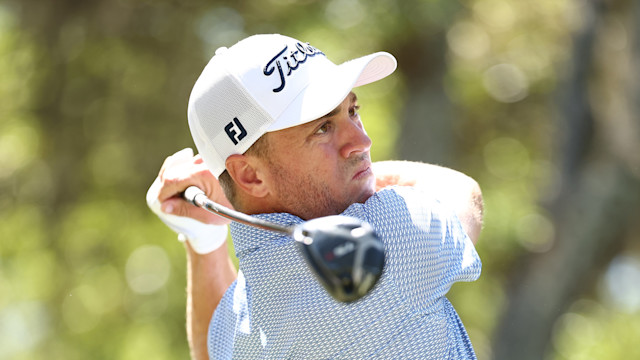quick coaching
Copy Scottie Scheffler's Backswing With This Simple Alignment Stick Drill
By Brendon Elliott, PGA
Published on

Watching Scottie Scheffler dominate through 36 holes at The CJ Cup Byron Nelson reminded me of something I've been preaching to my students for years: the shape of your backswing matters tremendously.
While Scottie was dissecting TPC Craig Ranch with surgical precision, his backswing, as it always has, demonstrated perfect positioning that many recreational golfers miss. The "shape" of his backswing—specifically how he takes the club back and to the top—creates the foundation for his consistent ball-striking.
The Ideal Backswing Path
Here's what I want you to understand: as you rotate your body going back, your hand path should stay more over your toe line to the halfway back position. From there, you need a slight hinge of the wrists upward, followed by your hands moving up toward your trail shoulder. This keeps the club and hands in front of your body throughout the backswing.

What happens when you get this right? Everything. Your club arrives at the top in a position that allows for a natural, powerful downswing sequence. Your body can rotate freely, and the club drops into the slot without manipulation.
The Common Amateur Mistake
The problem I see daily is golfers taking the club too far to the inside on the backswing. When your hands work too far behind your body early in the takeaway, you're creating a problem that requires compensation. The club gets "stuck" behind you, and suddenly, you're fighting physics instead of using it to your advantage.
Think about what happens next: from this stuck position, you're forced to either come over the top (hello, slice) or drop the club too far inside (hello, hook or push). Either way, you've created unnecessary complexity in what should be a smooth, natural motion in your transition down from the top.
Scheffler's backswing, by contrast, keeps everything connected and in front of his body. Watch his takeaway in slow motion, and you'll notice his hands never disappear behind his body from the down-the-line view. This positioning is no accident—it's the product of proper mechanics and countless repetitions.
I had a student last week who couldn't understand why his ball-striking was so inconsistent. When we put him on video, the issue was clear: his hands were traveling on a path that went well inside immediately in the takeaway. By the time he reached the halfway back position, the club was already behind his body, forcing a series of compensations that changed with every swing.
The Alignment Stick Backswing Drill
Here's a simple drill that I want you to try. It's the same one I've used with hundreds of students with great success:
1. Set your reference line: Place an alignment stick on the ground along your toe line.
2. Create your boundary: Stick a second alignment stick in the ground behind you, angled to match your desired hand path. Position it so that if your hands go too far inside during the takeaway, you'll make contact with the stick.
3. Practice the takeaway: Start with some slow-motion takeaways, focusing on keeping your hands working more up than around, staying above the ground stick, and avoiding the angled one behind you.
4. Feel the connection: Pay attention to how your chest and shoulders rotate while your hands stay more in front of your sternum.
5. Build muscle memory: After twenty or thirty repetitions, you'll begin developing muscle memory for this improved path.
The beauty of this drill is the immediate feedback—there's no guessing whether you're doing it right.
What I love about Scheffler's swing is how it combines technical excellence with athletic freedom. That's the balance we're all seeking. This backswing shape creates a foundation that allows your natural athleticism to shine through the rest of the swing.

Give this drill 15 minutes during your next practice session. I promise you'll start feeling a more connected backswing and, more importantly, seeing more consistent ball flight. Golf is hard enough without fighting your own swing mechanics. Get this fundamental shape right, and you'll be well on your way to your best season yet.
PGA of America Golf Professional Brendon Elliott is an award-winning coach and golf writer. To learn more about Brendon, visit OneMoreRollGolf.com.


